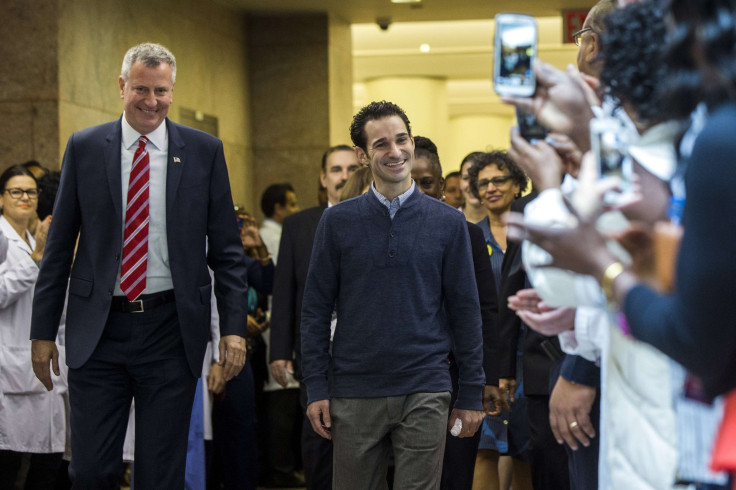How Ebola Exposes Diminishing US Investment in Public Health

In New York, an Ebola patient leaves the hospital. In Nebraska, this week, another entered. As the deadly virus continues to claim lives in West Africa, the number of people with Ebola treated in the U.S. hit double digits on Thursday. But behind each of the 10 patients, in a handful of American cities, is an often-unseen force marshaling scores of workers who’ve been monitoring, contact tracing, preparing and reassuring their communities: public health departments. And they’re wary.
“We are hearing about the concerns, the capacity to keep this going in a sustainable way for months or more,” says Jack Herrmann, senior adviser and chief for public health preparedness at the National Association of County and City Health Officials (NACCHO). The organization represents approximately 2,800 local public health departments throughout the U.S.
“They’re worried about how long they’re going to have to work at this heightened level,” Herrmann says, “because they have equally important public health issues that were happening before Ebola.”
The response to the relatively small number of Ebola cases has exposed an important link between the front line against the virus and the national offensive against everything from the flu to hurricane aftermath to the rise of Type 2 diabetes: They all draw on the same set of shrinking public health resources.
Federal disaster preparedness spending has dropped. Government per capita spending on public health in 2012 was roughly $240 per year, about 6 percent less than it was prior to the financial crisis. And in the wake of the recession, the workforce at public and state health departments has lost thousands of jobs.
“Congress and the executive branch have found these programs easy to cut in the budget process -- because there isn’t an immediate emergency,” says Jeff Levi, executive director of Trust for America’s Health. “And at the state and local level, the recession has caused wide-scale budget cuts across the board.”
That’s not to say that Ebola is going to overwhelm the U.S. public health system. Rather, the virus should serve as a warning, says Glen Mays, a professor of health services and systems research at the University of Kentucky. “It is certainly illustrating some of the gaps and constraints in our current public health system.”
One of the system’s biggest constraints is hobbled workforces. Since 2008, state and local health departments have shed more than 50,000 jobs, according to estimates by NACCHO and the Association of State and Territorial Health Officials.
“Much of public health is done through labor,” explains Mays. To control and prevent disease, public health workers coordinate with hospitals and emergency responders, and maintain open lines of communication on the latest training guidelines. They conduct outreach to populations that are vulnerable to infection. They receive and process case reports -- whether it’s a potential case of Ebola, or that of a food-borne illness.
“Infectious disease, chronic disease, even injuries draw on these same core capabilities,” says Mays. “And we have fewer public health protections today than we did five or six years ago.”
Mays’ own research suggests a striking link between public health investment and death rates from preventable disease. In a 2011 study, published in Health Affairs, he reviewed changes in spending patterns and mortality rates between 1993 and 1995 at nearly 3,000 local public health agencies across the country.
Ultimately, Mays and his co-author found that for every 10 percent increase in public health spending, rates of death from four of the leading preventable deaths dropped significantly: infant mortality declined by 6.9 percent and cardiovascular disease mortality by 3.2 percent. Diabetes mortality and cancer mortality fell by 1.4 percent and 1.1 percent, respectively.
“Communities with larger increases in public health spending experienced larger reductions in mortality from leading preventable causes of death over a 13-year period,” the paper found.
Consider, then, what another 10 to 15 years of persistent cuts to public health spending would look like. “We’ll see chronic disease effects from these diminished capabilities as well,” Mays predicts.
© Copyright IBTimes 2024. All rights reserved.




















